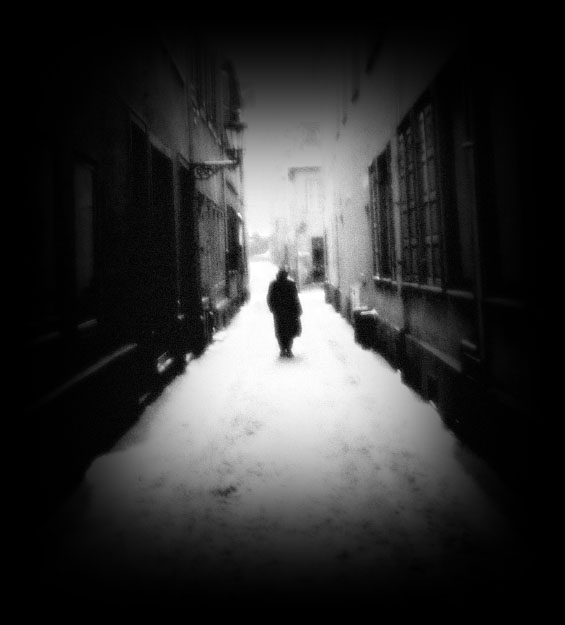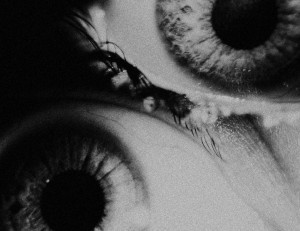Talk by Michael Stone, notes by MH (with errancies, mishearings, conjectures). This is talk 3 of 6 on Dogen’s 12th century Japanese text Mountain and River Sutra in Feb/March/April 2012. Centre of Gravity, 180 Sudbury Street, Toronto. www.centreofgravity.org
Community
What we’re doing is being in religious life and in our city life. Can we explore that without the hangover of the religious lives we led as children, the inheritance of the deep crust, the long hours, the ones at the front of the room filled with knowings. Could we open instead to the ones at the front of the room who are filled with unknowing? The ones who are busy swapping all their answers for questions.
A by product of being here, at Centre of Gravity, is that the privacy of sitting practice is met by the practice of community. How to live in a place where practice is not just private? I think sitting practice tends to attract introverts. What does it mean to practice in a room of introverts? I was always sceptical about joining groups, after getting through the door it would take me maybe a decade before I could warm up to the idea. But if you took the city of Toronto and tipped it on its end, all the non-joiners spilled out and some wound up here.

Sitting Practice
In sitting practice we pay close attention to the alignment, the physical posture. The groins are wide, the top groins are deep, the lumbar spine is lifted and your shoulder blades are flowing down your back. When the tongue releases this sensation carries through to the hyoid bone (a horseshoe-shaped bone situated in the anterior midline of the neck between the chin and the thyroid).
If you place your fingers under the ears there’s a pair of notches, if you move your fingers forward you can feel your jaw – an excellent place to store tension. If you go to the back of the jaw you can feel the skull, and then the temporal bone (located at the sides and base of the skull, and lateral to the temporal lobes of the cerebrum), which is the place in the skull most affected by breathing.
Non-clinging
The physiology of letting go is in the tongue. At the top of the inhale the soft palette lifts, and the temporal bones are released. If you keep your eyes looking forward and a little down the suboccipitals release. It’s important to keep the eyes steady and soft. When they’re closed in meditation, they’re often moving, just like when we’re asleep, and this produces unwanted tension in the pose. The internal aspect of alignment: release of the tongue and softness/stillness in the eyes. This is the physiology of non-clinging.
To work with the psychological, we need to work with the physical, hence the emphasis on the physical aspect of sitting practice. And we find that in yoga practice, in order to go deeper in our physical practice, we need to pay attention to the psychological piece.

Difficulty
Why does Dogen write such difficult sentences? This question carries an assumption that we can go into the intimate parts of our lives and express them in words. Dogen thinks the opposite: language by definition is always splitting things. We can’t capture what is dear to us because words can’t finally touch the mystery, or get beyond their knife cutting tendencies. And that’s why we have to use language. Dogen tries to do non-dualism in language, not incidentally at the very moment that many Zen teachers are turning towards calligraphy or poetry, what would become known as the Zen arts. But Dogen insists: don’t abandon language, push the words as far as they will go. Dogen is pro-language, he thought it was too idealistic to imagine that meditation is anti-thinking. So sometimes, while reading him, instead of trying to parse out traditional understandings, to grasp and contain him, you have to marinate in these texts. Imagine wrapping yourself in a large bag and soaking yourself in these texts overnight.
It’s when we think we can express what we really really feel with language that we can wind up hurting ourselves. That’s when we can start leaning on borrowed pleasures, hand-me-down understandings.
Mountains’ walking is just like human walking. Accordingly, do not doubt mountains’ walking even though it does not look the same as human walking. The Buddha ancestor’s words point to walking. This is fundamental understanding.
What part of your life is rigid and stuck? Do you have an idea about your career that is inert, or your romantic life or your family life? It’s all actually walking. If you look closely enough at it, it’s in motion, it’s walking. If you don’t understand that, you don’t understand walking. And if you don’t understand walking, then you don’t understand your life.
You may not notice that you study the green mountains, using numerous worlds of phenomena as your standards. Clearly examine the green mountains’ walking and your own walking. Examine walking backward and backward walking, and investigate the fact that walking forward and backward has never stopped since the very moment before form arose, since the time off the King of the Empty Eon.
Dogen is trying to speak in the tongue of rivers, the body of mountains. The more you look at the physical world, the more you see space. As Werner Heisenberg noted: the observer constantly changes the observed. In sitting practice you get closer to the breath until it’s not your breath. You get closer to your sadness until it’s not personal, the way you thought it was. It’s molecular, it belongs to everyone. You see it’s no-thing when you become interested in the place where observer and observed meet. This is the place where perception and religious life come together.

Craving
You may not notice that you study the green mountains, using numerous worlds of phenomena as your standards. Mountains are beyond the ways you can understand mountains. Clearly examine the green mountains’ walking and your own walking. Examine walking backward and backward walking…” Dogen isn’t speaking about literally walking backwards, this is a quote from Zen lore where you turn the mind backwards, so that the mind can see the nature of mind. For instance, if you have lots of craving – has anyone here experienced this? If we have craving we focus on the object and we talk ourselves in or out of it. In the life of the yogi, when you experience craving you release the object and turn back to the mind to feel craving. When you get to know craving you can feel that it’s walking, it’s moving. And then you can see that the desired objects have a background which is the whole net. The Buddha said that the problem with craving is that it prevents you from seeing the path. What’s the path? Action.
Dogen (off the top of my head)
If you follow the river all the way back to its source there are clouds.
If you follow the clouds all the way back to their source there is the river.
While washing hands you might visualize water turning back through the plumbing and becoming rivers and clouds. You can take this moment and walk backwards. There’s no outside of walking forwards or backwards, there’s no beginning or end. In this moment there is no outside of this moment. Everything is an endless springing forth.

Koan
Master Zengen Chuko in the Tan district one day visited a house with Master Dogo Enchi to convey their condolences. At that moment Master Zengen, patting the coffin, said: Is it alive or dead?
Master Dogo said: I will not say alive or dead.
Master Zengen said: Why won’t you say?
Master Dogo said: I will never say. I will never say.
On the way back to the temple Master Zengen said: Master! Please give me your answer now. If you don’t, I will hit you.
Master Dogo said: You can hit me if you like, but I will never say. Then Master Zengen hit Master Dogo several times with his fist.
On returning to the temple, Master Dogo said: It would be better for you to leave this temple, but if the Shuso hears that you are leaving it will cause problems.
After Master Dogo died, Master Zengen went to the temple of Master Sekiso Keisho. He told Master Sekiso about the incident and asked the Master for his teachings.
Master Sekiso said: I will not say it is alive; I will not say it is dead.
Master Zengen said: Why won’t you say?
Master Sekiso said: I will never say. I will never say.
On hearing these words, Master Zengen realized something.


